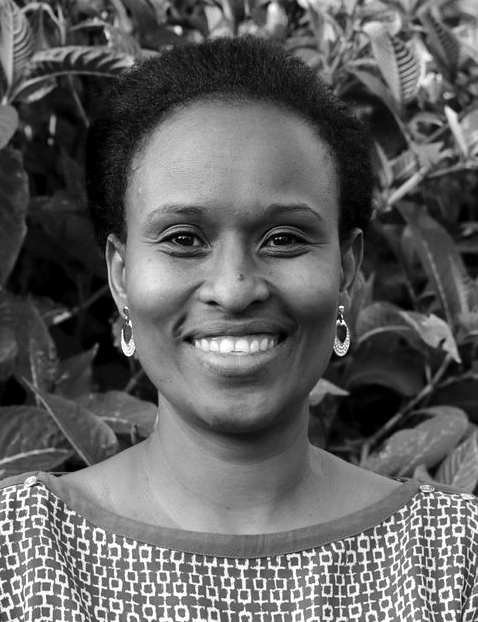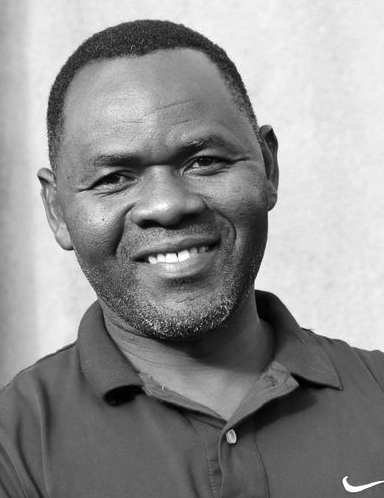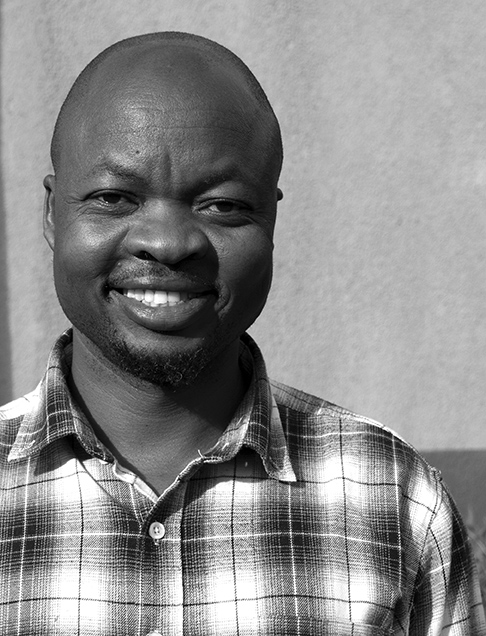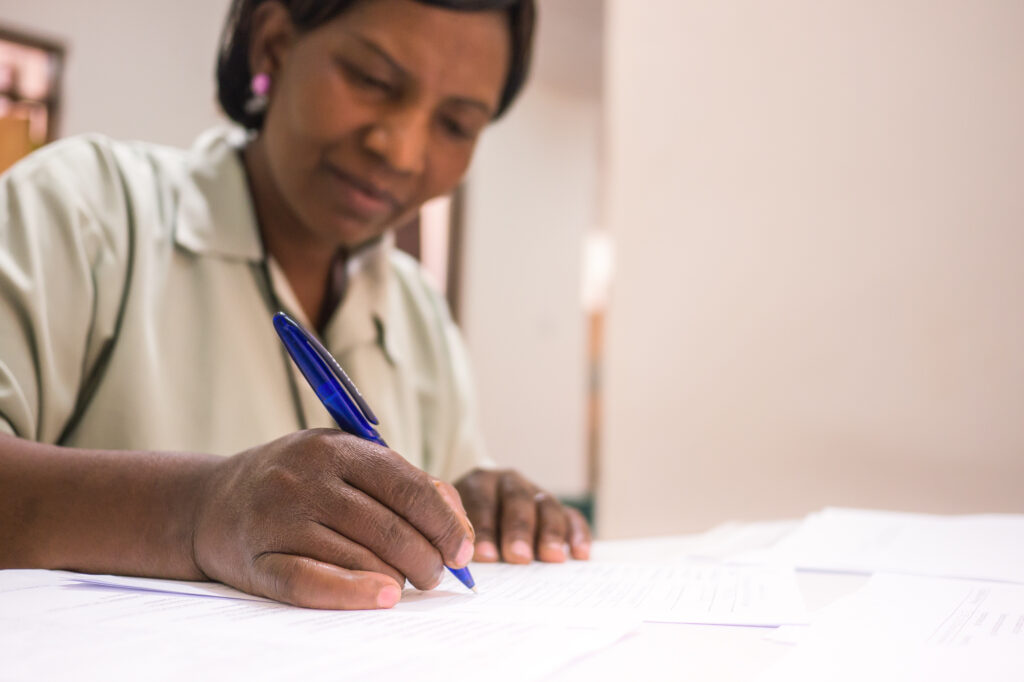The Safer Births Bundle of Care project includes digital technologies for large-scale comprehensive data collection of health system processes like facility readiness, dissemination of equipment and training, frequencies and quality of on-site training, clinical care, patient outcomes, and cost-effectiveness. To optimize the use of these data, eight PhD fellows are being funded, seven in Tanzania and one in Norway. The PhD projects are complementary and will target the four main areas of the SBBC project.
Overall Objectives
- Assess healthcare facility readiness and acceptability, uptake, quality, and sustainability of simulation-based training
- Evaluate establishment and importance of Continuous Quality Improvement efforts
- Evaluate the impact of SBBC on health system strengthening
- Document the impact on clinical care and patient outcomes
- Document the cost-effectiveness of SBBC implementation at the 30 sites
The seven Tanzanian PhD fellows, with their Tanzanian supervisors, will build an academic network and capacity in Tanzania laying the groundwork for a Center of Excellence in Simulation and Research at Haydom Lutheran Hospital. Three of the PhD fellows will be affiliated to Muhimbili University of Health and Allied Sciences (MUHAS; in Dar es Salaam), three to Kilimanjaro Christian Medical University College (KCMC; in Kilimanjaro), and one to the Catholic University of Health and Allied Sciences (CUHAS; in Bugando). The supervisor team will be a combination of Tanzanian professors affiliated with the three universities, Safer Births postdocs, and Norwegian professors. The Norwegian PhD fellow will be affiliated with the University of Stavanger in Norway.
Meet the PhD candidates

Damas Juma Kayera
MD, MPH
Title of PhD
Changes in Structural and situational readiness towards improved maternal and neonatal care in selected facilities in Tanzania.
Objective
To assess the effect of facility readiness on implementation of the maternal and newborn quality improvement (SBBC) project in selected health facilities in Tanzania.
Study 1
Determine the status of facility readiness in the provision of Maternal and Neonatal Care in the 30 SBBC facilities.
Specific Objectives
- To describe readiness of the 30 facilities for the provision of maternal and neonatal care.
- To compare readiness across the 30 health facilities.
Study 2
Identify approaches and processes for improving facility readiness for maternal and newborn care: challenges, strengths, opportunities.
Specific Objectives
- To identify necessary actions in different sites at the start of the project to achieve readiness to provide health service in the selected health facilities.
- Describe barriers to implement necessary actions identified in selected health facilities.
Study 3
Determine a change in health facility readiness to provide maternal and neonatal care following implementation of the quality improvement project in the 30 SBBC health facilities.
Specific Objectives
- To assess facility readiness after implementation of SBBC project
- Determine the level of change in facility readiness
- Determine the relationship between change in facility readiness and the extent of implementation of project interventions/SBBC.

Vickfarajaeli Z. Daudi
MD, MMED
Title of PhD
Perception, uptake, and impact of simulation-based on-job training (SBOJT) in 12 facilities; component of Safer Births Bundle of Care (SBBC) towards improved newborn care in Tanzania.
Objective
To assess the perception, uptake, and impact of SBOTJ after implementation of SBBC in Manyara and Tabora regions, Tanzania.
Study 1
The healthcare providers’ perceptions of the SBOJT component of SBBC towards improved newborn care in Tanzania.
Specific Objectives
- To assess the healthcare providers’ perception and experience on the use of SBOJT for newborn care.
- To explore the healthcare providers’ awareness and acceptability of SBOJT.
- To explore challenges, factors that impedes or promotes continuation of SBOJT over time among healthcare providers.
Study 2
Frequency and quality of SBOJT among healthcare providers in 12 facilities in Tanzania.
Specific Objectives
- To assess utilization of the NeoNatalie Live simulator for individual skill-training of newborn bag-mask ventilation over six months after SBBC implementation.
- To explore the level of simulation-based training practice within the first six months after the introduction of the SBBC project.
- To describe the frequency and quality of SBOJT using the NeoNatalie Live simulator over six months after SBBC implementation.
Study 3
Impact of SBBC and SBOJT on newborn care and outcomes in 12 facilities in Tanzania.
Specific Objectives
- To compare the number/percentage of ventilated newborn before and after start of SBOJT. To compare the number of hospitalized newborns before and after start of SBOJT.
- To assess 24 hours outcome of the newborn before and after start of SBOJT.
- To describe the association between training frequency and newborn care/outcomes.

Grace Patrick Qorro
MD, MPH
Title of PhD
Institutionalization of Continuous Quality Improvement (CQI) in Maternal and Newborn Care: A Case of Safer Births Bundle of Care (SBBC) in Tanzania.
Objective
To assess the institutionalization of CQI and related maternal and newborn care in the Manyara and Mwanza regions in Tanzania.
Study 1
Assessment of health facility readiness for CQI in management for maternal and newborn care in 12 selected health facilities.
Specific Objectives
- To assess the status of availability and use of CQI tools in maternal and newborn care in 12 selected health facilities.
- To determine the status of CQI management processes (as it relates to maternal and newborn care) at 12 selected health facilities.
Study 2
To explore the perception of mid-level health managers and HCWs in institutionalization of CQI in 12 selected health facilities.
Specific Objectives
- To explore factors that facilitate the institutionalization of CQI in 12 selected health facilities
- To explore barriers in the institutionalization of CQI in 12 selected health facilities
- To explore factors/best practices associated with maintaining and sustaining CQI uptake amongst healthcare workers in 12 selected health facilities
Study 3
To assess the effectiveness of CQI institutionalization in providing maternal and newborn care in 12 selected health facilities.
Specific objectives
- To assess changes in the level of CQI institutionalization for maternal and newborn care (end line assessment) in 12 selected health facilities.
- To document the relationship between the level of institutionalization and the quality of maternal and newborn care in 12 selected facilities.

Felix Ambrose Bundala
MD MA, Head of Newborn Division, Ministry of Health
Title the PhD
Health Facility Systems Strengthening for Neonatal Care Units to Improve Neonatal Care Outcomes: The case of Tanzania.
Objective
To assess the effect of strengthening health system functions for the NCU functioning to improved early neonatal care Outcomes in 12 health facilities from 2 Regions under SBBC.
Study 1
Assessment of the status of the health systems functions supporting service delivery of 0-7 days neonates at the health facility level, baseline assessment.
Specific Objectives
- To determine the availability of newborn resuscitation areas and NCU to admit newborns.
- To assess the capacity of service providers in the provision of care for 0-7 days neonates.
- To assess the availability of essential newborn care commodities at the health facility.
- To assess documentation of admissions, prophylaxis, treatments, and deaths of newborns 0-7 days.
Study 2
Assessment of the status of the health systems functions supporting service delivery of 0-7 days neonates at the health facility level, 6-12 months post baseline assessment.
Specific Objectives
- To determine the availability of newborn resuscitation areas and NCU to admit newborns.
- To assess the capacity of service providers in the provision of care for 0-7 days neonates.
- To assess the availability of essential newborn care commodities at the health facility.
- To assess documentation of admissions, prophylaxis, treatments, and deaths for newborns 0-7 days.
- To document process outcomes on early neonatal care at the health facility/NCU.
Study 3
To explore factors affecting the establishment of strengthened facility health systems for improved early neonatal (EN) care outcomes.
Specific objectives
- To explore drivers, barriers, opportunities, and threats for strengthening facility health systems for improved early neonatal care outcomes.

Catherine Massay
BSc. Nursing, MSc. Midwifery
Title of PhD
Provider perception, acceptability, and impact of low-dose high-frequency (LDHF) simulation-training on postpartum hemorrhage (PPH) in selected health facilities in Tanzania.
Objective
To assess providers’ perception, acceptability of simulation-based LDHF on-job training on PPH and impact on maternal outcomes in two selected SBBC implementing regions of Tanzania.
Study 1
Providers’ perception of simulation-based LDHF on-job training on PPH towards improving maternal outcome in Tanzania.
Specific objectives
- To assess providers’ opinions on simulation-based LDHF on-job training for management of PPH in Tanzanian facilities.
- To explore providers’ perceived barriers and facilitators of using simulation-based LDHF on-job training to improve knowledge and skills in management of PPH.
Study 2
To assess the effectiveness of simulation-based LDHF on-job training for management of PPH on kno
ledge and skills retention among healthcare providers in selected health facilities.
Specific objectives
- To assess the immediate pre and post initial training healthcare providers’ knowledge and skills on management of PPH in selected health facilities.
- To describe the association between frequency of LDHF on-job training using MamaNatalie and knowledge and skills retention among healthcare providers in the selected health facilities.
Study 3
To assess the impact of simulation-based LDHF on-job training on maternal outcomes in selected health facilities.
Specific objectives
- To determine the rate of maternal near-miss associated with Post-partum hemorrhage (PPH) before and after implementation of SBBC in the selected health facilities
- To determine the maternal mortality rate associated with PPH before and after implementation of SBBC in the selected health facilities

Florence S. Kalabamu
MD, MMED
Title of PhD
Implementation and Sustainability of Systematic In-situ Low Dose High-Frequency Simulation-Based Training for Neonatal Resuscitation.
Objective
To assess implementation and quality of systematic onsite LDHF-SBT, to improve quality of neonatal care efforts in 12 healthcare facilities.
Study 1
To assess acceptance, knowledge, and skill gains and retention after introducing NeoNatalie Live and SBT among healthcare providers in 12 facilities.
Specific Objectives
- To describe participants’ reaction and acceptance after the first introduction of in-situ SBT (using innovative tools) among healthcare providers in the 12 health facilities
- To assess knowledge gain and skills acquisition after introduction of in-situ SBT (using innovative tools) among healthcare providers in the 12 health facilities
Study 2
To assess knowledge and skills retention one year after implementation of in-situ LDHF-SBT and CQI efforts using PSDA cycles in 12 healthcare facilities.
Specific Objectives
- To assess knowledge and skills retention one year after implementation of in-situ SBT (using innovative tools) among healthcare providers in the 12 health facilities
- To compare the level of facilities readiness at the start of SBT and the level of CQI over one year in high versus low performing facilities in the selected regions
Study 3
Acceptability, barriers, and facilitators for implementing in-situ systematic LDHF SBT and CQI efforts at different sites among health personnel.
Specific Objectives
- To explore healthcare personnel’s acceptability, barriers, and facilitators of SBT uptake and implementation in selected Geita and Shinyanga region facilities.
- To explore the driving force and motivation behind facilities that use SBT effectively/sustain SBT training during implementation.

Boniphace Richard Marwa
MD, MPH
Title of PhD
An economic evaluation of scaling the Safer Births Bundle of Care (SBCC) intervention in health care facilities in Tanzania.
Objectives
Conducting an economic evaluation of Safer Births Bundle of Care (SBBC) project implementation at health care facilities in Tanzania Mainland.
Study 1
The cost of implementing the SBBC project (wages, training, transport, equipment, et cetera). The results will describe the costs incurred by the project during the time of the implementation in the first regions.
Specific objectives:
- To determine the critical path activities and their related costs
- To determine the development costs of the SBBC project
- To determine the implementation costs of the SBBC project
- To determine the post-implementation costs of the SBBC project
Study 2
The costs distribution changes over time and place (e.g., differs from region to region) as the project develops according to feedback and learning. As the project is implemented step by step (step-wedged randomization) in the different areas, it is hypothesized that there are variations in cost over time and place.
Specific objectives
- To determine the distribution costs of the SBBC project over changing time
- To determine the distribution costs of SBBC project over changing places
Study 3
Cost-effectiveness of implementing SBBC.
Specific objectives
- To determine the unit cost per life saved of the newborn based on the outcome measures of the project.

Kjetil Torgeirsen
Title of PhD
Dissemination, quality, and sustainability of simulation-based training in the Safer Births innovation to scale project.
Objectives
To evaluate the SBBC training cascade and roll-out process, assess implementation of a mentorship program targeting the 60 facility champions, and the use of the Circle of Learning to enhance CQI efforts.
Study 1
Document and describe the SBBC training cascade and the SimBegin training to SNBC sites in Tanzania over 1 year.
Specific objectives
- Develop and implement the SimBegin training program.
- Develop and test a model for scale up og simulation-based training.
Study 2
Document and assess implementation of the mentorship program in association to quality of trainings and CQI efforts in different hospitals.
Specific objectives
- Increase facilitator competency.
- Build sustainable local simulation capacity.
Study 3
Evaluate the Circle of Learning as a tool to support CQI efforts, and associated effects on frequency/quality of simulation-based training in SBBC implementation sites.
Specific objectives
- Utilize data from NeoNatalie Live and the LiveBorn app to identify, categorize and plan targeted training.
- Test the Circle of Learning as a tool for Continuous Quality Improvement (CQI).
These eight new PhD projects will contribute to the growing body of research evidence that supports the efficacy of the Safer Births programs and training methods.
